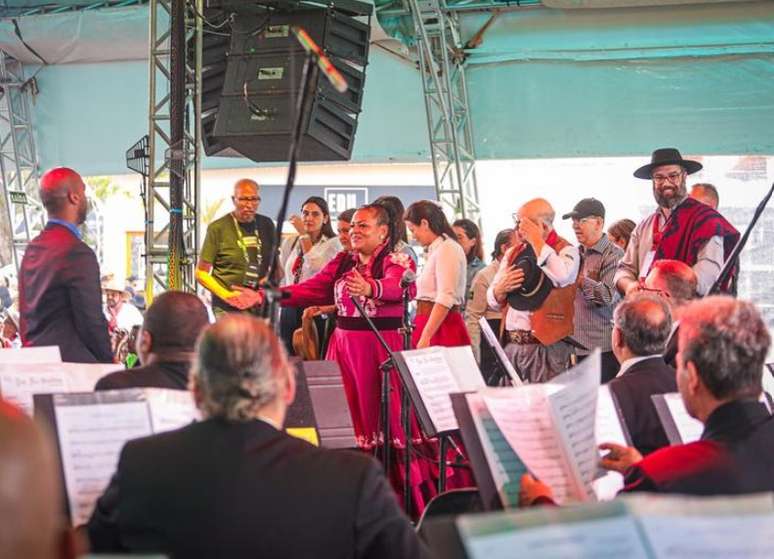Personal tragedies and a reputation for being a portal to the afterlife characterize the “spirit game.” But science has an explanation
It is likely that, out of fear, curiosity or even inexplicable fascination, you have already heard of it. A simple cardboard board decorated with letters, numbers and the words “yes”, “no” and “goodbye”. Above it, a triangular pointer that seems to scroll by itself, revealing mysterious answers about the past, present and future.
What began as harmless entertainment in Victorian parlors in the 1890s has evolved into one of the most intriguing and controversial objects in popular culture: the Ouija board.
The roots of the Ouija board date back to the 1840s, during the rise of modern spiritualism in the United States. After the Civil War, death had affected virtually every family in the country. “Everyone has lost a father, a son, an uncle, a grandfather, a cousin,” historian Robert Murch, president of the Talking Board Historical Society, explained to the British newspaper. The Guardian in 2016.
With so much loss and unanswered questions, society has desperately searched for ways to contact deceased loved ones. Thus, spiritual encounters with mediums, séances and tarot readings began to become popular.
-toalkdkfk4z5.jpg)
In this context, the Kennard Novelty Company began selling its “wonderful talking board” in 1890. The name “Ouija”, contrary to popular belief that “ouija” derives from the French and German words for “yes” (oui and ja) , happened in a peculiar way: during a session in Baltimore, Helen Peters, a medium considered powerful and sister-in-law of Elijah Bond, one of the founders of the company, asked the board itself what it should be called. On the planchette was written “ouija,” which, according to the device, meant “good luck.”
To obtain the patent, Bond and Peters went to the Patent and Trademark Office in Washington. The patent officer asked for a demonstration: if the board could spell his name correctly, they would allow the patent to proceed. As Smithsonian Magazine reported in 2013, the pointer moved and revealed the employee’s name, who, pale and surprised, granted the recording.
A commercial phenomenon
It didn’t take long for the Ouija board to fall into the hands of businessman William Fuld, who turned it into a major commercial phenomenon. Fuld used catalogs such as that of the Sears department store to promote the game, highlighting its aura of mystery and its apparent ability to answer questions about the past, present and future, which catapulted its popularity.
Historian Robert Murch argues that Fuld was instrumental in the success of the Ouija, thanks to his brilliant marketing strategy and his talent for reinventing the history of the board.
However, the history of Ouija is also marked by personal conflicts. According to an article in The Guardian, medium Helen Peters, who played a key role in the creation of the board, ended up distancing herself from it after an unfortunate episode. When family Civil War heirlooms disappeared from his home, Peters used Ouija to find out who took them. The panel accused a family member, creating an irreconcilable division among the relatives: some believed the accusation, while others, including Peters, rejected it.
The dispute was never resolved, which fragmented the family and led Peters to sell his shares in the company. “Until his last day, he warned everyone: Don’t play with the Ouija board because it lies,” Murch says.
-sl68kptqmbtx.jpg)
Businessman William Fuld also faced family problems, even breaking relations with his brother. In 1927 Fuld was killed in a tragic accident while supervising the construction of a factory that he said the council had ordered him to build. Despite the tragedies, his family maintained the company until 1966, when it was sold to Parker Brothers and subsequently acquired by Hasbro, which still recommends handling the Ouija board with respect.
Ouija in the 20th century
The interpretation and application of Ouija have diversified over time. Similar to the post-Civil War context in the United States, during the tumultuous years of World War I and the 1918 influenza epidemic, many people turned to counseling to find comfort in connecting with deceased loved ones.
At the beginning of the 20th century the table also began to be seen as a romantic and joyful element. In the 1920s, the board’s popularity grew and it became a favorite dating game, allowing couples to sit together and talk flirting.
“More than connecting with dead loved ones, this was the question: Can I connect with something unknown?” Stephanie McGuire, curator of the Molly Brown House museum in Denver, recently told National Geographic.
Even Norman Rockwell, famous for his illustrations of idealized American life, immortalized this aspect in a cover story for The Saturday Evening Post, showing a young couple playing a chess board.
-r1alee7s6o9w.jpg)
A darker perception of the board
The Ouija plays went from innocent to increasingly spooky. In the late 1960s, influenced by events such as the Charles Manson murders and the rise of the Church of Satan, the council’s image changed dramatically. The turning point came in 1973 with the release of the film The Exorcist. The film, based on a true story, featured a scene in which the protagonist plays with a Ouija board.
From that point on, horror films began to reinforce this sinister image. “It’s like Psycho: Nobody was afraid of showers until that scene,” Murch told Smithsonian Magazine. “Before The Exorcist, depictions of spiritualism in film and television were often silly (…) After that it’s no longer a joke.”
All of this has led to the Ouija board, among others, becoming a “tool of the devil” in popular culture and being denounced by religious groups.
-qxnudu4qv5gk.jpg)
The science behind the mystery
Despite its supernatural reputation, scientists have a more earthly explanation for how the Ouija board works: the ideomotor effect, a psychological phenomenon that generates unconscious movements.
Interestingly, research from the University of British Columbia, Canada, revealed that the board can help access knowledge stored in our subconscious. In the experiment, participants answered questions correctly more than 65 percent of the time when they used Ouija, compared to 50 percent when they answered without it.
“You can create a very strong impression that the movement is caused by some external agent, but that is not the case,” Chris French, a psychologist at Goldsmiths University in London, told Smithsonian Magazine.
Although death seems more remote in our era than it did in the Victorians, the Ouija board continues to enchant many people. The game still has its place in sleepovers and youthful imaginations. According to a National Geographic report, the Salem Witch Council Museum often receives gambling from people who, despite understanding the scientific principle behind how it works, choose to discard it out of fear of its supposed influence.
Ouija remains a testament to how, even in an age dominated by technology, the mysterious and inexplicable continue to capture our collective imagination with uncommon strength.
sf/cn (DW)
Source: Terra
Rose James is a Gossipify movie and series reviewer known for her in-depth analysis and unique perspective on the latest releases. With a background in film studies, she provides engaging and informative reviews, and keeps readers up to date with industry trends and emerging talents.

-1ji1nqhh012yb.jpg)




